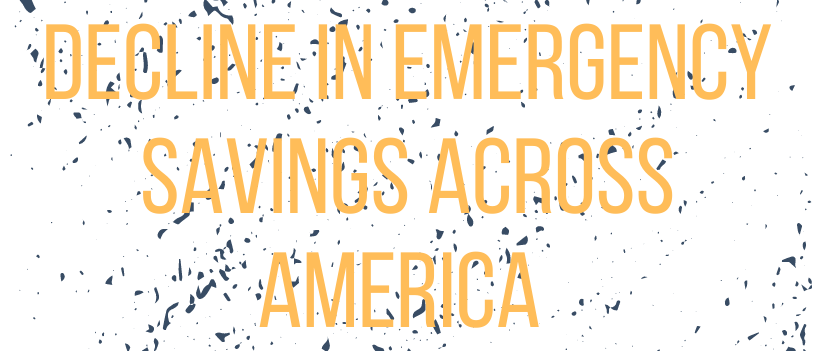Emergencies are going to happen. This is why it is important to be prepared for when life throws unexpected events your way. From business troubles to medical situations, it can be beneficial for you to start an emergency fund to cover any financial surprises.
According to a survey from Bankrate.com, more than half of Americans (53%) have savings in place that is more than their credit card debt. This percentage is lower compared to 2021, as it was previously 54%. Although this percentage has decreased for 2022, it was found that only 22% of Americans had more credit card debt than emergency savings, while in 2021 the percentage was 27%.
Unfortunately, 1-in-7 American households (15%) have no credit card debt, but also no emergency fund for unexpected surprises. Although these families do not have debt to be concerned with, it is still a precarious position to be in. One unplanned expense could cause high credit card debt due to lack of planning for unexpected events.
It is recommended that families have these extra funds on hand in order to help with financial stability. Not only this, but by having an emergency fund saved up this will help with the family’s stress levels as you will know you are prepared for the unexpected.
In the Bankrate.com survey, when asked to choose if they would rather boost their emergency savings or pay down their debt, 50% of households confirmed they would prefer to boost their emergency fund, while 32% would rather pay down debt. Another 4% stated they would like to focus on boosting both simultaneously. The additional 12% confirmed that neither one is considered a priority to them.
One interesting finding of the survey is that your generation may help determine if you are more likely to have an emergency savings that exceeds your credit card debt. For example, the survey found that millennials (ages 26 – 41) were more likely to have credit card debt that exceeds their emergency savings. On the other hand, Gen Z (18 – 25) and younger baby boomers (age 58 – 67) were twice as likely to say that they would prioritize adding to their emergency savings instead of paying down their credit card debt.
Unfortunately, for Gen X, Gen Z, and younger millennials, the pandemic has really affected their emergency savings. For example, 37% of Gen Xers, 46% of those among Gen Z, and 54% of millennials, have reported having less savings now than before Covid-19. Due to unemployment and income disruptions, it has been found that younger workers have been hit harder by the pandemic which has taken a toll on their emergency savings.
The survey also found that the likelihood of having more credit card debt than emergency savings can’t necessarily be predicted by your income level. For example, upper middle-income households or those with $50,000 – $74,999, are the most likely (38%) to have more credit card debt than those in other income brackets. Families with an income under $30,000 annually were 31% likely and respondents with an income of $30,000-$49,999 were 26% likely. Only 14% of households with an income of $75,000 or more had credit card debt that exceeded their emergency savings.
In conclusion, if you currently do not have an emergency fund, consider starting by putting money slowly aside for those unexpected surprises. By having a fund this will potentially help you stop adding to your current credit card debt every time you hit a financial bump. Not only this but saving for emergencies can help you live comfortably and not stress about unexpected events that may come your way.
